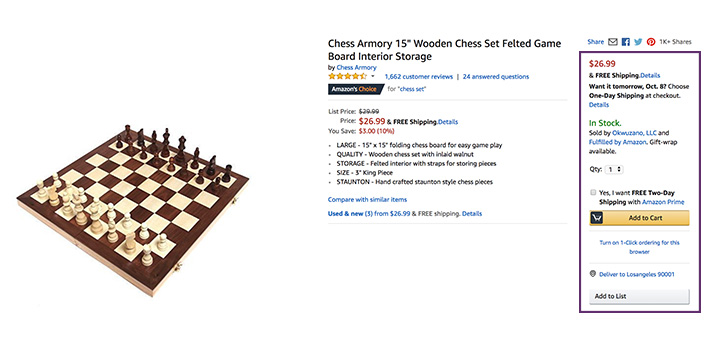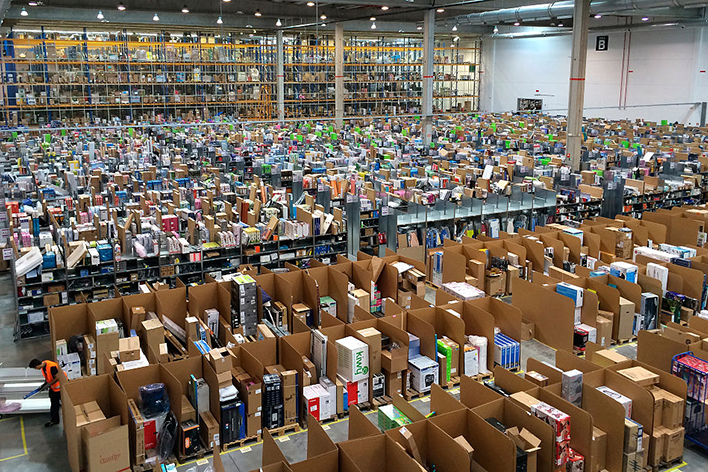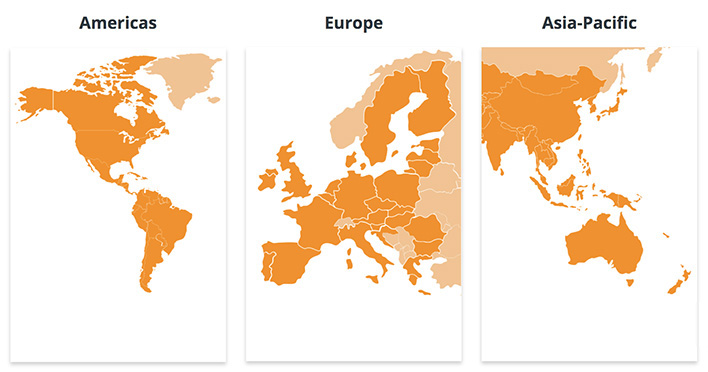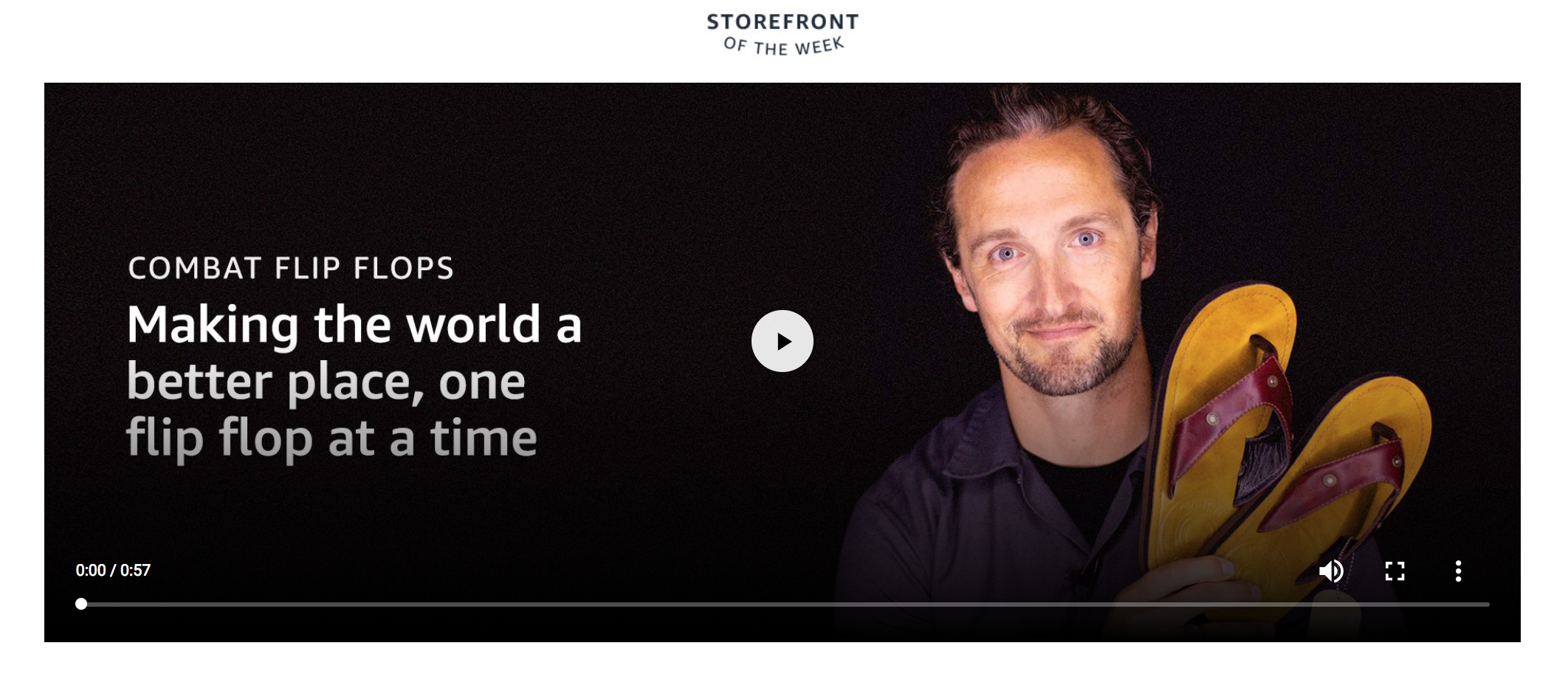We’ve been in the Amazon space for years and sometimes we forget how many acronyms and terms we use on a daily basis. That is until we start talking about work and watch our friends’ and family members’ eyes glaze over. Sound familiar? Well, help is on the way! We put together this handy guide of common Amazon terms for new sellers, old sellers, and your friends and family to reference.
A-to-Z Guarantee
Amazon defines the Amazon A-to-Z Guarantee as protection for customers when they purchase items sold and fulfilled by a third-party seller. This guarantee covers both the timely delivery and the condition of your items. Or, as most people refer to it, “Amazon’s amazing return policy.”
Account Health
An overall metric used to determine how your Amazon store is performing. It takes into account customer service, product policy, and shipping to determine your performance and is measured by percentage.
ACoS (Average Cost of Sale)
This metric is used in Amazon advertising and tells you what your average ad spend is to make a sale. This can be determined per keyword and per campaign. It is calculated by dividing your total ad spend by the amount spent to achieve a sale. ACoS = 100 * (Total Ad Spend ÷ Total Sales). For example, if you spent $15 on advertising and it resulted in $50 of sales, your ACoS would be 100*15/50 = 30%.
Ad Impressions
Impressions tell you how many times your ad has been displayed. Keep in mind that it could be seen on the search results page or at the bottom of another product listing.
Amazon’s Choice
This is a badge awarded to listings based on product ratings, price, and availability to ship. Receiving this badge from Amazon is proven to increase sales!

Amazon Search Algorithm
Built by the A9 team, who is responsible for making sense of the billions of search requests that happen every month. The main objective of the search algorithm is to help shoppers find products more easily and to help sellers advertise their products on these searches.
Amazon Standard Identification Number (ASIN)
Each product on Amazon is given a 10 digit alphanumeric unique ASIN (e.g., B123456789). This allows Amazon to distinguish and separate products.
A+ Content (formerly known as Enhanced Brand Content (EBC))
A+ Content can bring your listing to the next level. This feature allows brands enrolled in the Brand Registry to include additional imagery, videos, and more detailed product descriptions to their product detail pages.
Best Seller Ranking (BSR)
Also known as your Amazon Sales Rank, Amazon determines the Best Seller Ranking using sales and historical sales data per product. However, it is dynamic and changes frequently. BSR is an indicator of both how well a product has sold in the past and how well it has sold in the last few hours. It is best to track this number over time to get an accurate representation of a product's performance.
Brand Registry
Where we all want to be (we’re only slightly kidding). The Brand Registry is where you register your private label brand and protect your brand and products from counterfeiters and fraud. It also gives you access to certain features like Product Display Ads and Enhanced Brand Content. (We’ll get to those later.)
Buy Box
The Buy Box incorporates the large “Add to Cart” and “Buy Now” buttons on each listing. When you’re selling the same product as other sellers, it is vital to capture the Buy Box, as it is responsible for the majority of sales.
 Depth
Depth
This metric can be found in the MerchantWords database and indicates how many letters are required for a keyword to be suggested by autocomplete in the Amazon search bar. It demonstrates how quickly a keyword appears with 1 being the fastest a keyword can appear and 25 being the slowest.
Fulfillment by Amazon (FBA)
Fulfillment by Amazon means you send your product into the Amazon warehouse and they are then responsible for packing and shipping your product when you make a sale!

Fulfillment by Merchant (FBM)
FBM is the opposite of FBA. You, as the seller, are responsible for shipping all orders that come through Amazon. You must handle all customer complaints related to fulfillment.
Lightning Deals
These Amazon deals are available for a limited time to shoppers. Sellers set what the discount will be and how long the deal will run.
Long Tail Keyword
This is a keyword phrase that contains two or more words. Long tail keywords are used to target niche demographics rather than mass audiences.
Marketplace
This term can be used to talk about Amazon as a whole, but also to reference the individual countries in which Amazon sells (e.g., “US Marketplace,” “UK Marketplace”).

Negative Keywords
Despite their name, negative keywords aren't bad. These are the search terms that you don’t want your listing or ad to appear on when running a pay-per-click advertising campaign. For example, if you’re selling a stuffed animal shaped like a dog you would use “dog toy” as a negative keyword. While it technically describes your toy, you wouldn’t want your products to appear in the search results.
Pay-Per-Click (PPC)
This term is applied to Amazon Advertising. You are charged each time that your Sponsored Product, Sponsored Brand, or Product Display ad is clicked.
Piggybacking
This is an informal term for multiple sellers selling on the same Amazon listing. Unless you are enrolled in Amazon Brand Registry, Amazon content ownership is shared. Amazon will pull in what it sees as the best content (from all of the sellers selling the product) to display for the customer.
Private Label
When selling Private Label, you sell products under your brand and work directly with manufacturers to produce your product.
Product Display Ads
These ads are shown on the top, sides, and bottom of the search results page. This type of advertising is only available to sellers in Amazon's Brand Registry.
Rating
On Amazon, each product is rated by customers out of five stars. If you’re hitting four stars and above, you’re doing great!
Retail Arbitrage
Another form of third-party that entails finding products at a discount in your local community and selling them for a profit on Amazon.

Search Engine Optimization (SEO)
This includes placing the most relevant, highly-searched keywords in your listing to increase your product's discoverability and organic search ranking. Read: our bread and butter.
Search Volume
The number of times a keyword is searched on Amazon by all visitors to the site in one month. (Amazon receives approximately 2.5 billion visits every month!) This is important for finding new products and learning how to market your existing ones. Keep in mind, no one has direct access to Amazon’s data. We’re all providing search estimates.
Seasonality
This term indicates how often a keyword is searched throughout the year. “Water bottle” is popular all year round. “Halloween costume” spikes in September and October. You’ll find this term on our search results page.
Seed Term
Seed keywords are primary keywords, also known as "head keywords" or "main keywords". These terms typically consist of just one or two words and have not been qualified by a modifier (color, size, audience, etc.).
Seller Central
Seller Central is Amazon’s home base for its selling community. In Seller Central, you’re able to upload and manage inventory, run advertising campaigns, and more.
Sponsored Brands
Formerly known as Headline Search Ads, this Amazon Advertising option is currently only available to sellers enrolled in Amazon Brand Registry. This campaign option allows sellers to promote their brand and products through banner ads at the top, side, and bottom of the search results page.
Sponsored Products
This is the most popular type of Amazon Advertising. Your product listing appears on the product search results page before non-sponsored listings.
Storefront
Amazon and sellers alike use this term for the public-facing side of an Amazon store.

Top-of-the-Funnel Keywords
These short keywords are broad searches for overarching products. These terms receive large search volume estimates; however, they are highly competitive and pull in a lot of products.
Wholesale
Wholesaling is a form of selling on Amazon. It involves buying large quantities of a product at a low price and then reselling it at a higher price.
Want to monitor the BSR of your competition, boost your ad impressions, and get millions of Amazon keywords for SEO? Find out more about MerchantWords' Amazon API.


